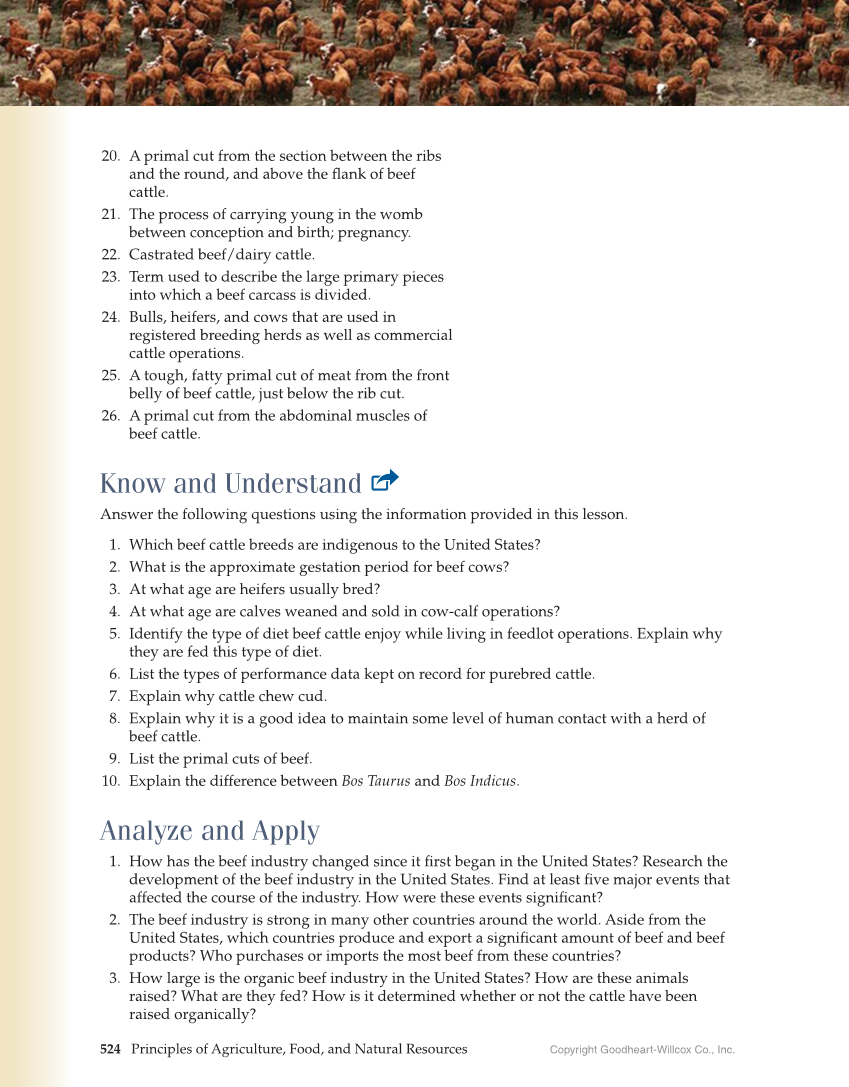Copyright Goodheart-Willcox Co., Inc. 524 Principles of Agriculture, Food, and Natural Resources 20. A primal cut from the section between the ribs and the round, and above the flank of beef cattle. 21. The process of carrying young in the womb between conception and birth pregnancy. 22. Castrated beef/dairy cattle. 23. Term used to describe the large primary pieces into which a beef carcass is divided. 24. Bulls, heifers, and cows that are used in registered breeding herds as well as commercial cattle operations. 25. A tough, fatty primal cut of meat from the front belly of beef cattle, just below the rib cut. 26. A primal cut from the abdominal muscles of beef cattle. Know and Understand Answer the following questions using the information provided in this lesson. 1. Which beef cattle breeds are indigenous to the United States? 2. What is the approximate gestation period for beef cows? 3. At what age are heifers usually bred? 4. At what age are calves weaned and sold in cow-calf operations? 5. Identify the type of diet beef cattle enjoy while living in feedlot operations. Explain why they are fed this type of diet. 6. List the types of performance data kept on record for purebred cattle. 7. Explain why cattle chew cud. 8. Explain why it is a good idea to maintain some level of human contact with a herd of beef cattle. 9. List the primal cuts of beef. 10. Explain the difference between Bos Taurus and Bos Indicus. Analyze and Apply 1. How has the beef industry changed since it first began in the United States? Research the development of the beef industry in the United States. Find at least five major events that affected the course of the industry. How were these events significant? 2. The beef industry is strong in many other countries around the world. Aside from the United States, which countries produce and export a significant amount of beef and beef products? Who purchases or imports the most beef from these countries? 3. How large is the organic beef industry in the United States? How are these animals raised? What are they fed? How is it determined whether or not the cattle have been raised organically?
